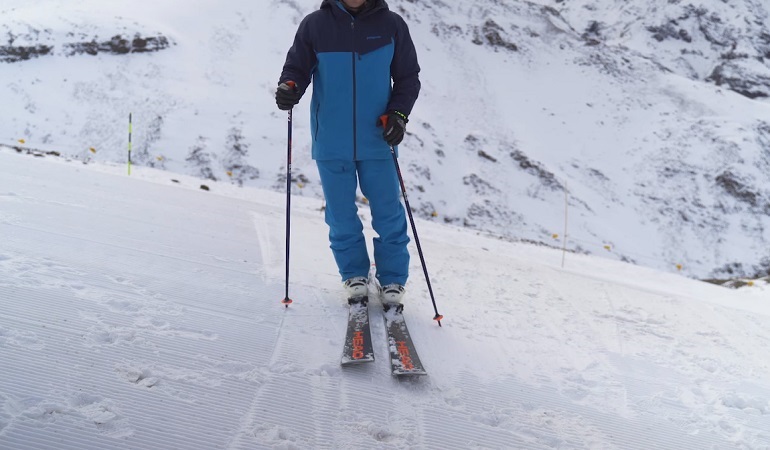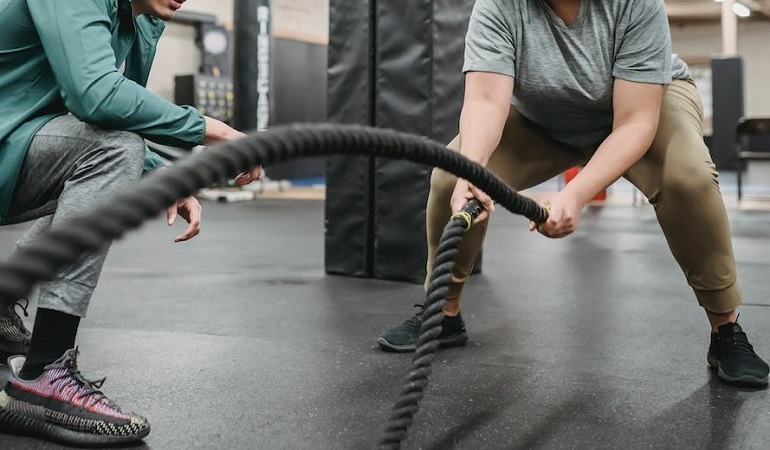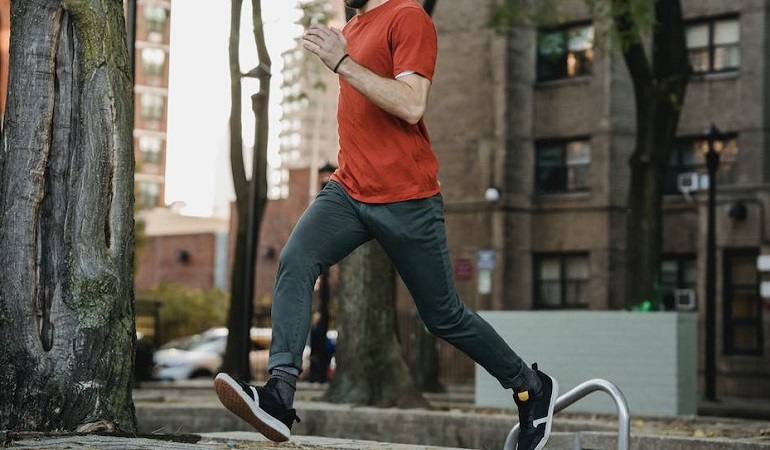I have made the mistake of not preparing for my next ski season far too many times. I’ll start the new season without having worked the muscle groups that are so necessary for better performance and rapidly pay the price.
Bad cardio, all-over body soreness, and rubbish balance always make those first few days ache.
What if I told you there’s a way to avoid all that agony, prepare for a new ski season, and be fit as a fiddle from the first run?
Keeping your body in skiing condition is simply a case of specifically maintaining the muscles you’ll be using on the mountain. This doesn’t just help with skiing. It can also help maintain your overall fitness and help lose weight.
You will find a few simple exercises before and during the season, your performance will greatly improve on the slopes. It’s worth taking the time to put yourself through a little training.
Trust me, you’ll be feeling smug whilst everyone else massages out their aching, atrophied muscles.
Here’s a Quick Guide on Some Pre Ski Season Preparations
There are a few core points to pay attention to if you want to be in tip-top shape, not just for the ski slopes, but just in your daily life.
My personal training plan always makes sure to address these throughout the year. Decent exercise helps me prevent injury and keeps my energy level in a good place.
Balance is Key

Having strong core muscles is something people often overlook in their workout regime, but they are incredibly important to your overall balance and strength. When skiers are flying down hills, as well as lower body muscles, keeping the core engaged is what actually provides stability.
You can maintain your balance with a lot of exercises before your first day. In the gym, you can focus on squats, abdominal and oblique workouts, and other weight-based exercises.
Boost Muscular Strength
I hate being out on the mountain early in the season and just not having the muscular strength to handle the uneven terrain. Getting up from a ski lift and feeling my muscles shaking is usually a sign I have not maintained the muscles I need.

I usually feel the burn in my quadriceps and thighs as they take the hardest hits during skiing activity. Then, I’ll feel it in my lower back and quad.
I have learned to maintain my muscles with training. I use a barbell or dumbbell to build my muscle groups and keep them powerful. A simple training plan will keep your muscular strength where skiers need to be. If you want to calculate how many calories you’ll burn every hour on your upcoming ski vacation
Build Endurance
Easily the ski training I struggle with the most. I am not a fan of doing cardio. If you want to ski for a good long day, you’re going to have to push your body to the limit of its cardiovascular limits.
Running on a treadmill and swimming are great exercises to give you the stamina of skiers’ lungs.

Skiing Training Schedule
So when should you start your training, when should you call on the help of a personal trainer, and how often should you be working out? (The answer is all the time and always).
When to Begin?
Really, you should be training all the way through the year. Exercise is for life, not just for Christmas. Of course, if you already hit the gym regularly, you may want to start focusing your workout more toward legs, core strength, and mountain activity about two to three months before you get out there.
When to Boost Your Cardio?
If you’re anything like me, you like to write off your cardio exercise for the day with your walk to the gymnasium. This isn’t the way to do it really. You should be focusing on cardio throughout the year and always have it as a part of your workout routine.
If running is too boring for you, try swimming which is an incredible all-over body workout that takes the weight off your legs and results in a low-impact sport. It will stop you from feeling the burn in your chest and allow you to ski hard all day.
How Often
I like to get to the gym five days a week. This gives me two days of rest and lets me focus on separate muscle groups every day with a period of rest between. This isn’t necessary to have your body ready for skiing though. A few times a week is absolutely fine as long as you exercise the muscles you use to ski.
Exercises For Skiing Training

So you’re going to commit and get those legs and hips limbered up for the hill. Let me show you a few great exercises you can do to get that skier’s body back.
Exercise: Walking Lunge with Rotation
You have probably seen these before. The addition of a twist in the hips helps strengthen the oblique muscles and stretches out your hips.
- Stand with your hands outwards from your chest and your feet shoulder-width apart.
- Step forward with one foot and lower yourself without letting your knee touch the ground.
- Control your balance, feel your hamstring lengthening, and squeeze your core.
- When you squat to the bottom, twist your arms and torso to the opposite side of your forward leg.
- Face forward again and bring your back leg back to your other leg and return to a standing, straight leg position.
- Repeat for the other leg, making sure not to let your knees touch the floor and keeping your core tight.
Once you have mastered this right leg and left leg movement, you can add some weight to it. Try holding a dumbbell as you rotate your hips making sure to keep your arms parallel. Excellent for quads.
Exercise: Lateral Ski Jumps
This movement is reminiscent of an ice skating movement. I like the one-leg squat position, and you will really feel the benefits when skiing downhill.
This is a simple but effective exercise that will work wonders for your glutes, inner thighs, quads, and hamstrings. The explosive power used in the contracting of the legs will make cutting into turns a lot easier.
- Get into the starting position on one leg with your knees and hips bent, and your other leg tucked behind your leg that’s on the floor.
- Keep your head up and shoulders straight.
- Jump from one foot to the other, landing softly and alternating the lifted leg.
- Bend your knees as you land on the other side, using the power and shifting weight to straighten your leg and spring back to the other leg and your original starting position.
- You should really feel this in your thighs and calves as the repetition of the explosive movements strengthens your legs.
If this becomes too easy, add weight cuffs to your ankles.
Exercise: Squat Reverse Lunge
Similar to the lunge, this focuses on your hamstrings and glutes.
- Begin in the standing position with your feet shoulder-width apart.
- Rather than lunge forward, move your leg in the opposite direction and step behind your front foot in a straight line.
- Squat down with one leg making sure your back knee doesn’t touch the ground.
- Keep your head up straight, shoulders and toes forward, and core nice and tight. Feel it in your glutes and hamstrings.
- Lean forward to balance, and bring your back foot back together with your front.
- Repeat for the next leg.
You can do this with a barbell when you squat. You can also add a pause at the base of the lunge to strengthen your glutes and hamstrings.
Exercise: Bridge With Abductor Squeeze
Nothing beats a hip thrust, or as it is also known, bridge, for building those glutes. It is also excellent for lower back pain.
- With your shoulders on the ground, lift your hips with feet hip-width apart using your elbow for support.
- Place some foam between your knees and clench them together.
- Lower your hips, relax, and push your hips up away from the ground squeezing the foam block, and tensing your glutes and core slightly.
- Control your movements back down
Hip thrusts can be done with weights across your hips for a greater challenge.
Exercise: Hip Roll
I love these after a day out, they loosed up my tight lower back muscles. They are designed to take the pain out of your spine after a heavy landing.
- Lay on your back and keep the knees of your right leg and left leg raised and together with your feet on the floor in an arch shape.
- Roll your knees as far to the left, and to the right, ensuring your lower back stays as flat to the ground as possible.
- At the bottom of every rotation hold the position for a few seconds, controlling your breathing.
If you struggle to get the knee of your right and left leg to the ground, push your knee slightly with your hand.
Exercise: Wood Chop
This movement is designed with your obliques in mind. Skiers often overlook the upper body, but maintaining will really help prevent injuries.
- Using a cable machine, ensure the alignment is above your shoulder.
- Stand side on to the machine and slightly part your feet.
- Have a slight bend in your knee and reach across your body and grip the handle.
- Pull the cable in a downward motion across your body feeling the obliques shortening.
- Slowly release the cable back to its starting position.
- Repeat for both sides.
Increase the weights and height of the cable for some variation.
A Last Rep From Me
Taking care of your body is very important whether you’re going out skiing or not. Interval training, weight training, and many others will keep you fighting fit all year.
Follow these best exercises for skiing to strengthen your core muscles and get back in shape.
Stay fit, look stylish, and keep shredding!
0 Comments